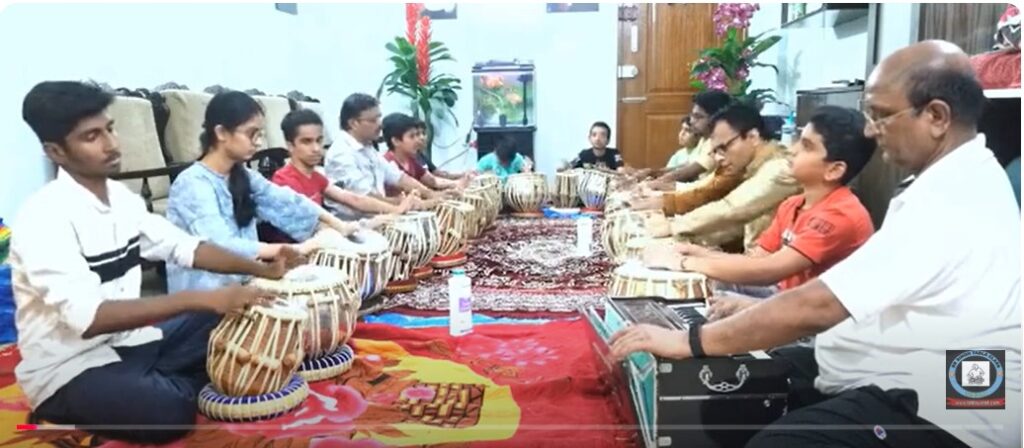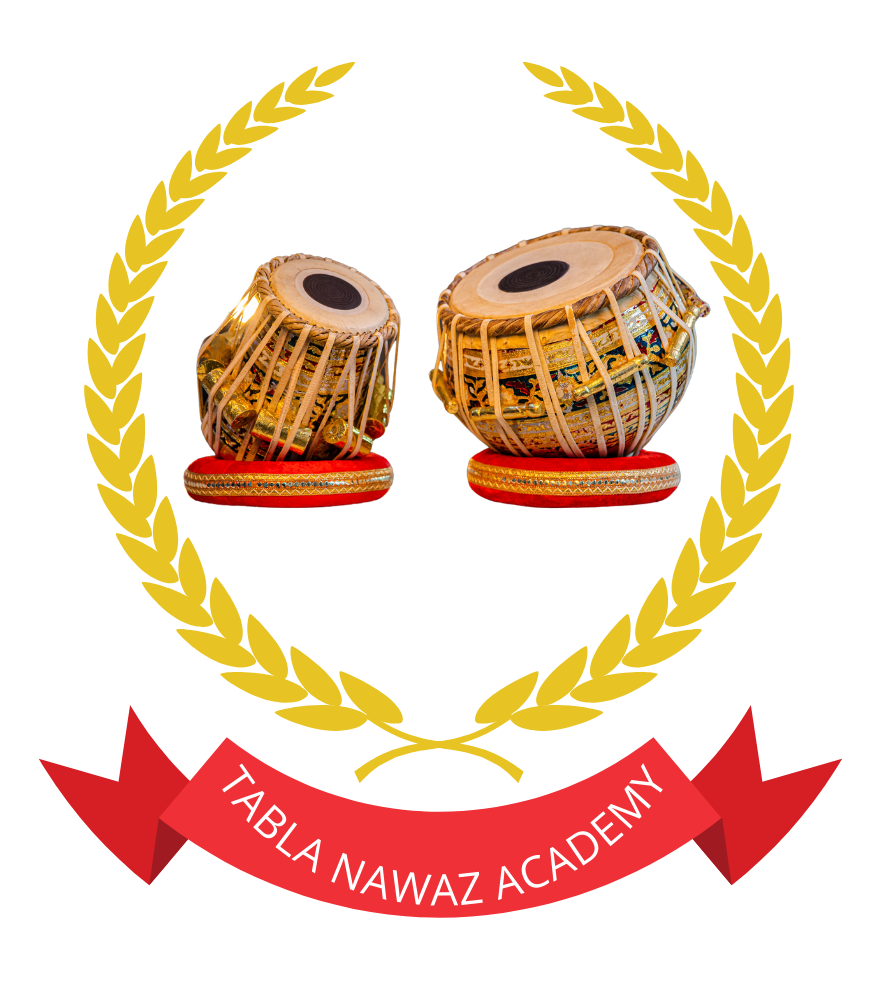The Sangeet Bhushan Part-3 Tabla syllabus for the 2024/25 session is meticulously designed to elevate students’ mastery of the tabla, guiding them from intermediate proficiency to advanced artistry. This comprehensive program delves into intricate rhythmic patterns, complex compositions, and the rich theoretical frameworks that underpin Indian classical music. By integrating both theoretical knowledge and practical application, the syllabus aims to produce well-rounded musicians capable of both solo performances and collaborative endeavors.
Course Structure
The syllabus is divided into two primary components:
- Theory: This segment provides an in-depth exploration of advanced rhythmic concepts, historical contexts, and the theoretical underpinnings of tabla music.
- Practical: This section emphasizes hands-on training, focusing on the execution of complex compositions, improvisational skills, and performance techniques.
Theory Component
Key areas of study include:
- Advanced Taal Structures:
- Comprehensive analysis of complex taals such as Rupak (7 beats), Ek Taal (12 beats), Deepchandi (14 beats), Sool Taal (10 beats), Tilwada (16 beats), Teevra (7 beats), Chautaal (12 beats), and Jhaptaal (10 beats).
- Detailed examination of their divisions (Vibhag), claps (Tali), and empty beats (Khali), along with their applications in various musical contexts.
- Historical Context and Evolution:
- Study of the origins and development of the tabla, including its role in different genres of Indian classical music and its adaptation over time.
- Notation Systems:
- Advanced training in the notation systems of Pt. Vishnu Digambar Paluskar and Pt. Vishnu Narayan Bhatkhande, enabling precise documentation and interpretation of complex compositions.
- Analytical Study of Compositions:
- Critical analysis of advanced tabla compositions, understanding their structure, improvisational elements, and the creative processes involved in their development.
Practical Component
The practical segment focuses on:
- Advanced Compositions and Techniques:
- Mastery of intricate compositions, including advanced Kayadas (structured improvisations), Relas (fast-paced compositions), Gats (fixed compositions), Tukdas (short compositions), and Chakradars (cyclical compositions).
- Development of advanced playing techniques, emphasizing clarity, speed, and precision.
- Taal Proficiency and Improvisation:
- Proficiency in performing Thekas (basic rhythmic patterns) of complex taals, along with the ability to improvise within these frameworks, showcasing creativity and deep understanding.
- Tempo Mastery:
- Capability to perform compositions across various tempos, including Ekgun (single speed), Dugun (double speed), Tigun (triple speed), and Chaugun (quadruple speed), demonstrating versatility and control.
- Accompaniment Skills:
- Techniques for effectively accompanying vocalists, instrumentalists, and dancers, ensuring harmonious collaboration and adaptability to different performance settings.
Assessment and Evaluation
The evaluation process comprises:
- Theory Examination:
- Written assessments covering advanced concepts of taal structures, historical contexts, notation systems, and analytical studies of compositions.
- Practical Examination:
- Performance-based evaluations requiring students to demonstrate proficiency in advanced compositions, improvisational skills, tempo versatility, and accompaniment techniques.
Learning Outcomes
Upon successful completion of the Sangeet Bhushan Part-3 Tabla course, students are expected to:
- Theoretical Mastery:
- Possess a comprehensive understanding of complex rhythmic structures, historical evolution, and theoretical aspects of tabla music.
- Practical Expertise:
- Exhibit advanced playing techniques, with the ability to perform intricate compositions and improvisations with precision and artistic expression.
- Analytical and Creative Skills:
- Demonstrate the ability to analyze complex compositions and contribute creatively through improvisation and composition.
- Performance Readiness:
- Be fully prepared for professional performances, both as solo artists and as accompanists, displaying confidence and adaptability.
Conclusion
The Sangeet Bhushan Part-3 Tabla syllabus represents a significant milestone in a student’s musical journey, bridging the gap between intermediate proficiency and advanced artistry. By encompassing a thorough understanding of theoretical concepts and practical skills, the course prepares students for the complexities of professional performance and paves the way for further academic pursuits in the realm of Indian classical music.
For detailed information on enrollment, specific course requirements, and examination schedules, prospective students are encouraged to consult official resources or contact accredited music institutions offering this program for the 2024/25 session.
https://www.youtube.com/@BhagawanSingh
https://www.facebook.com/sbsinghtablaguru

